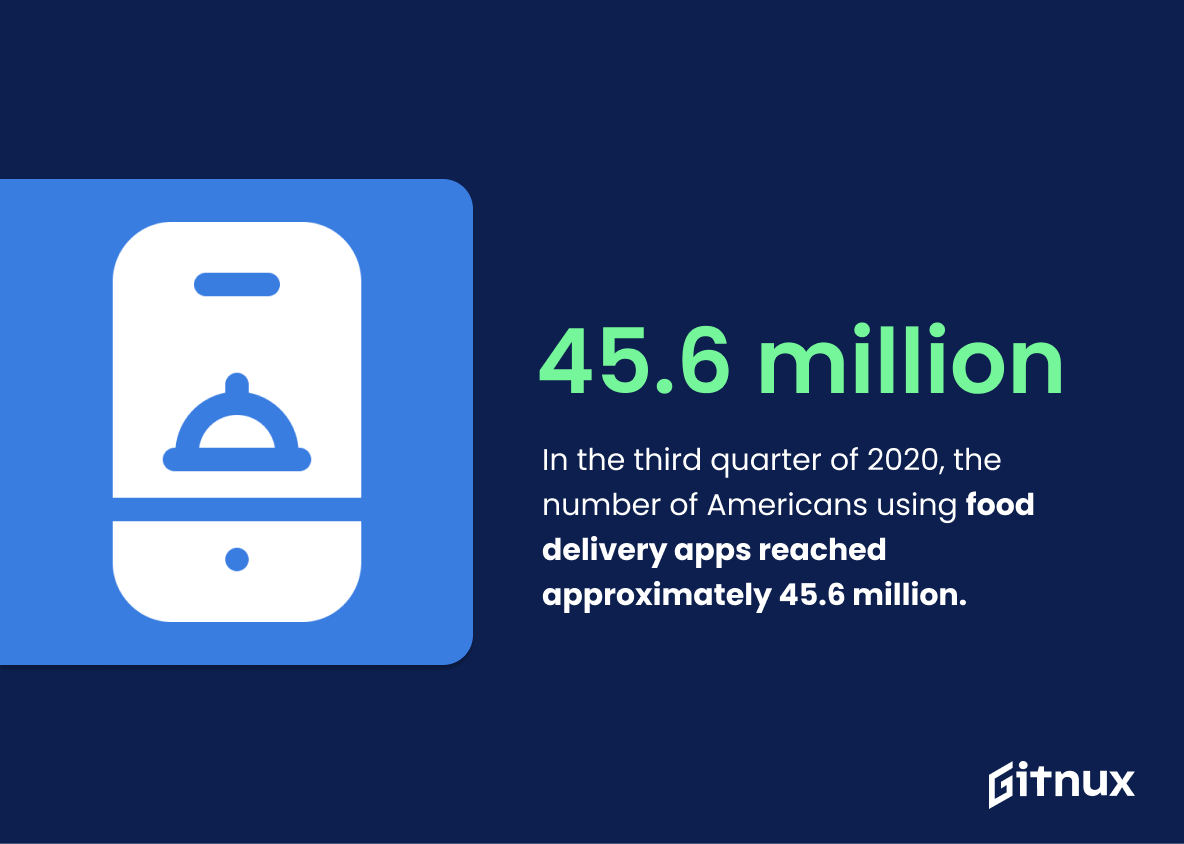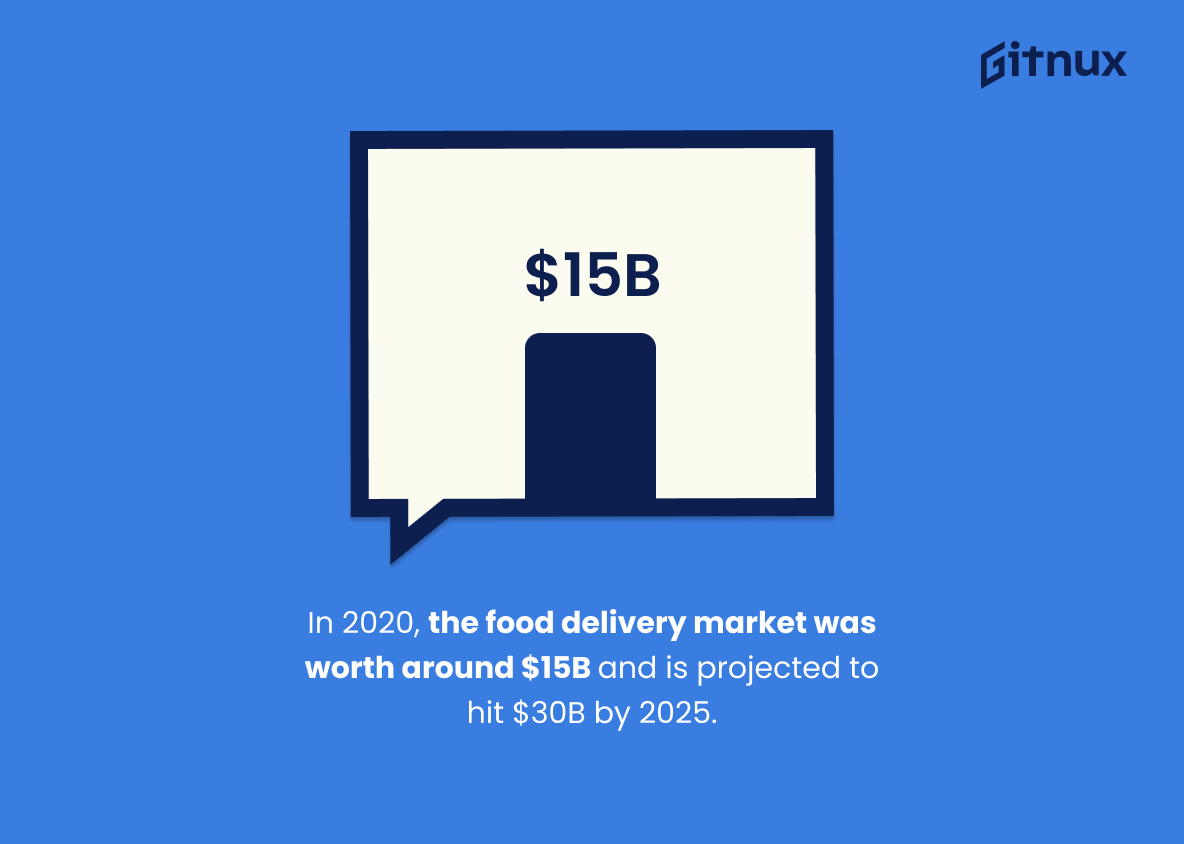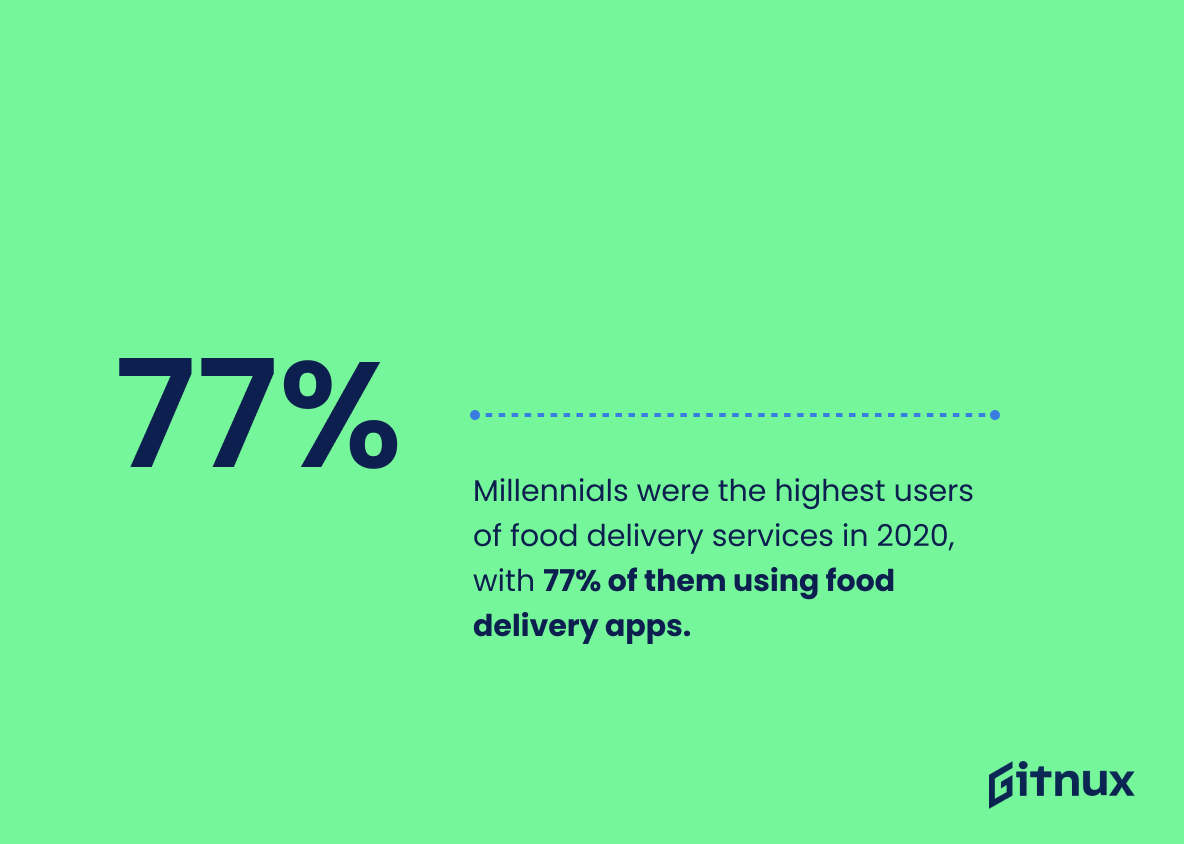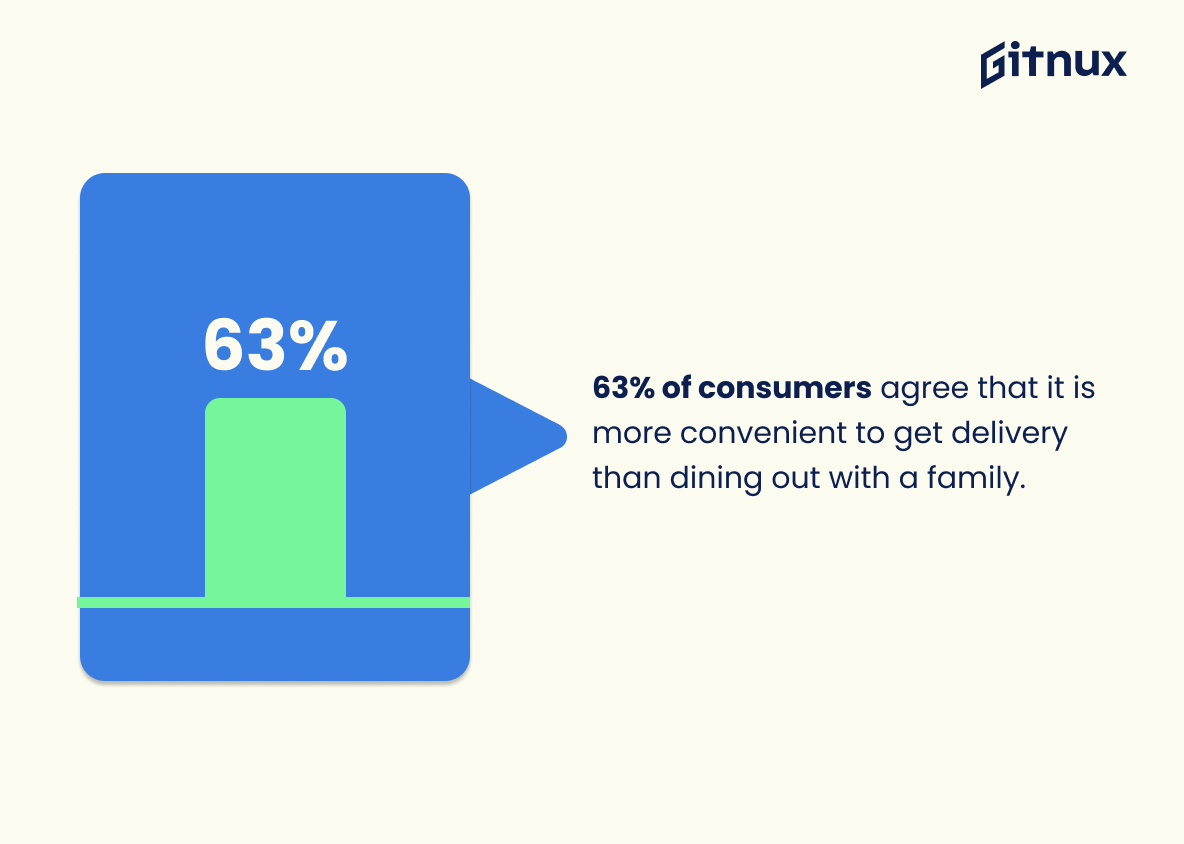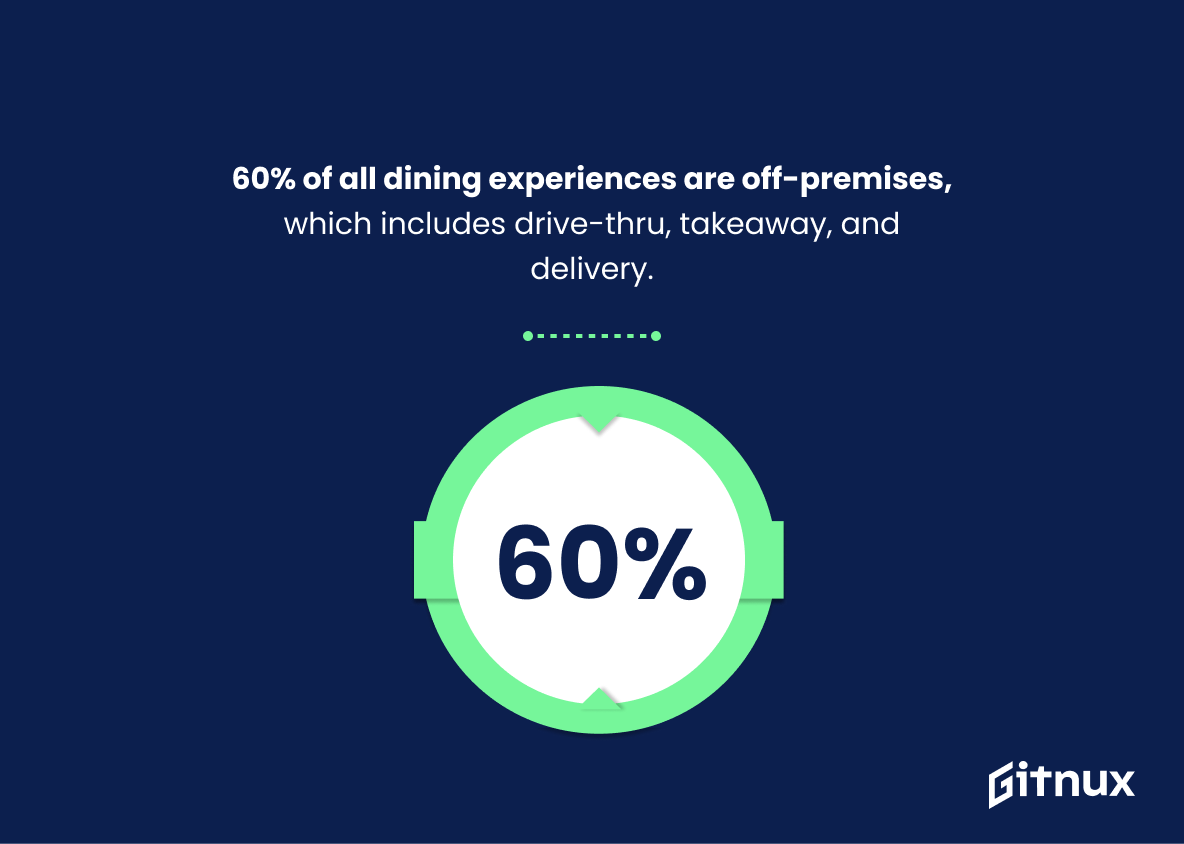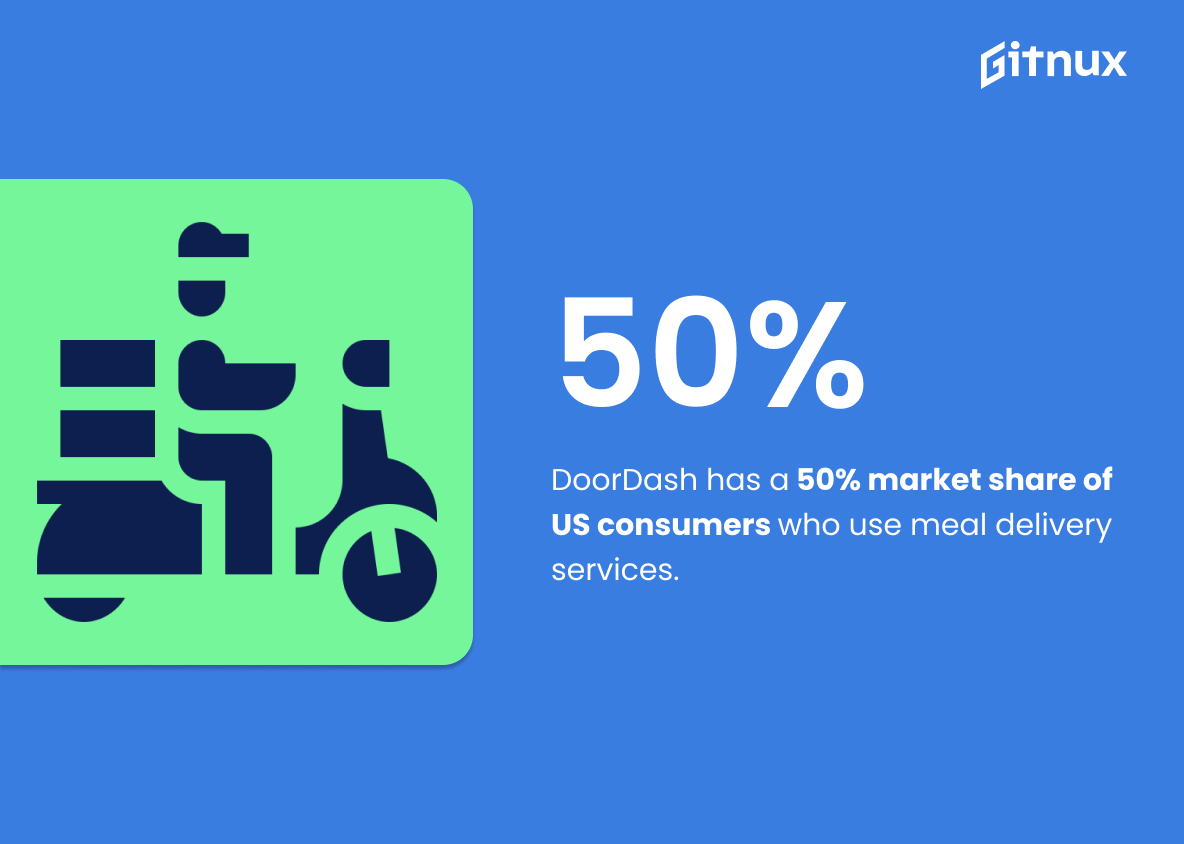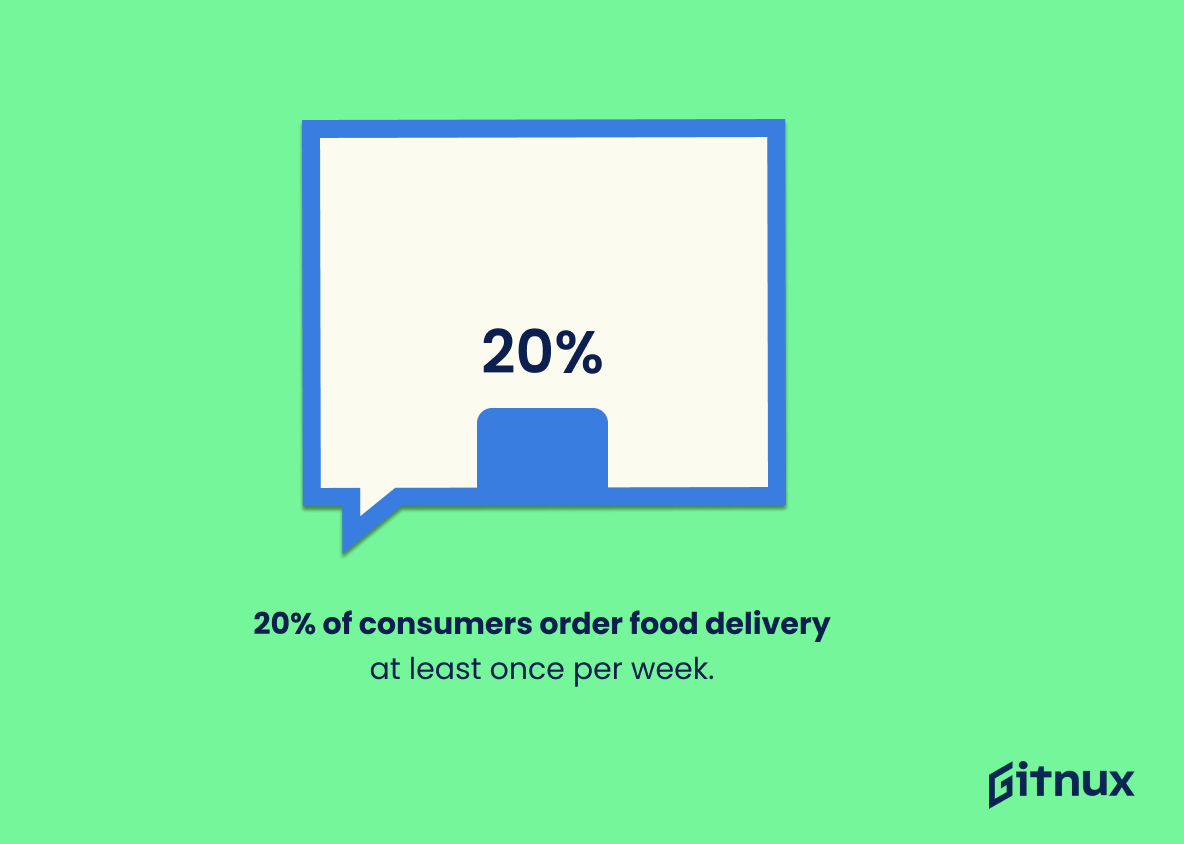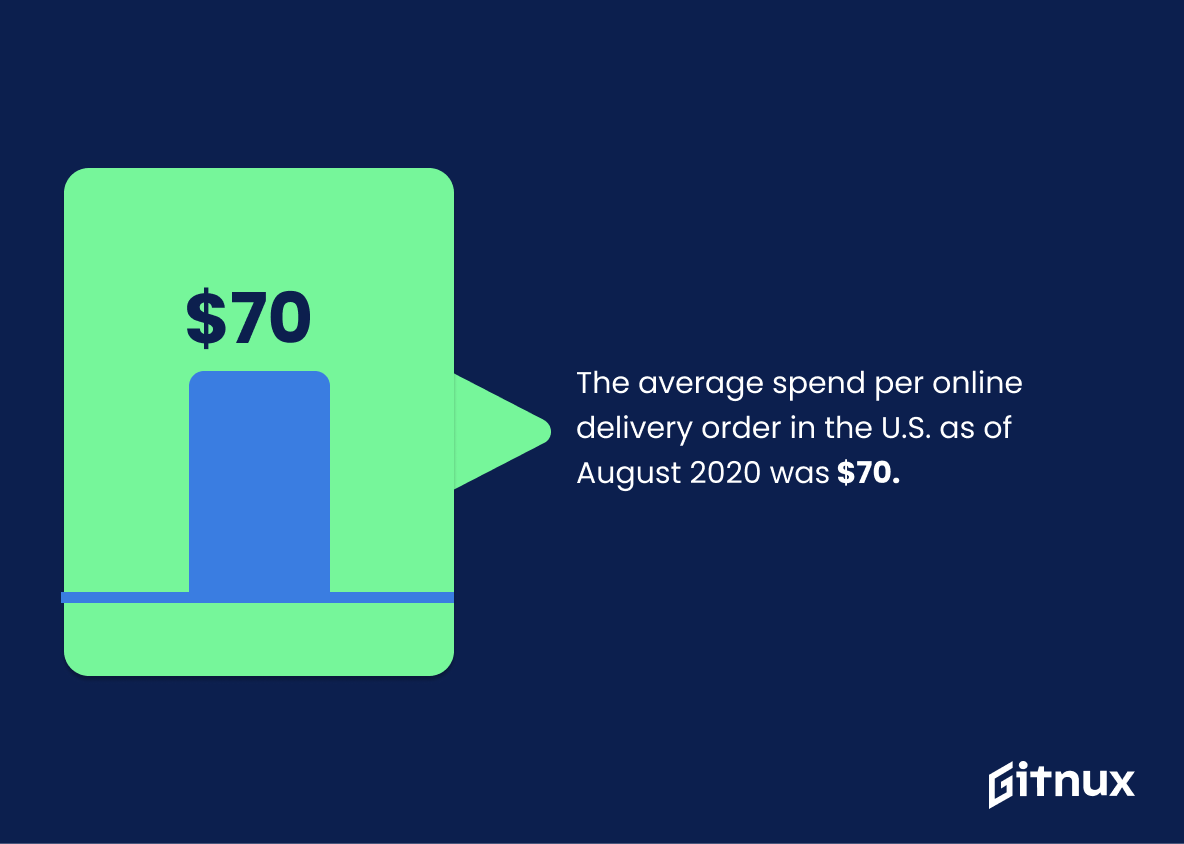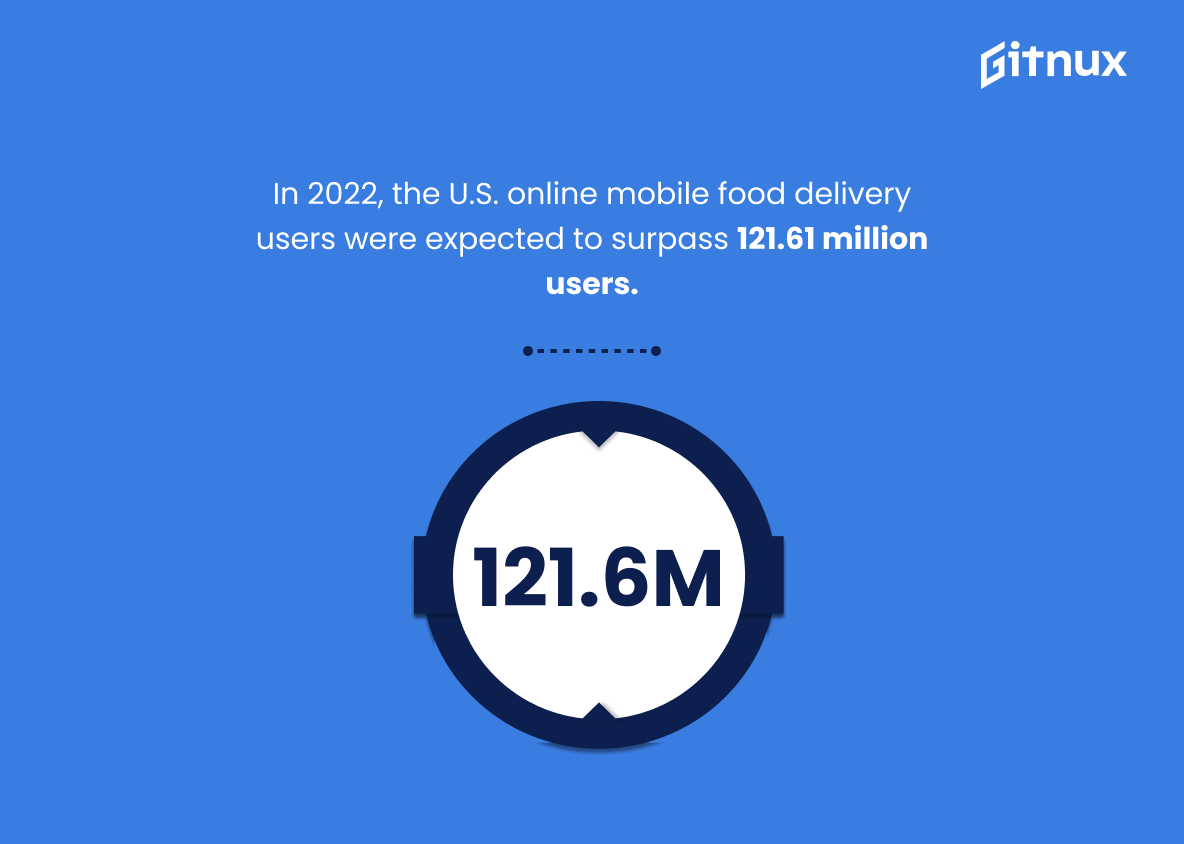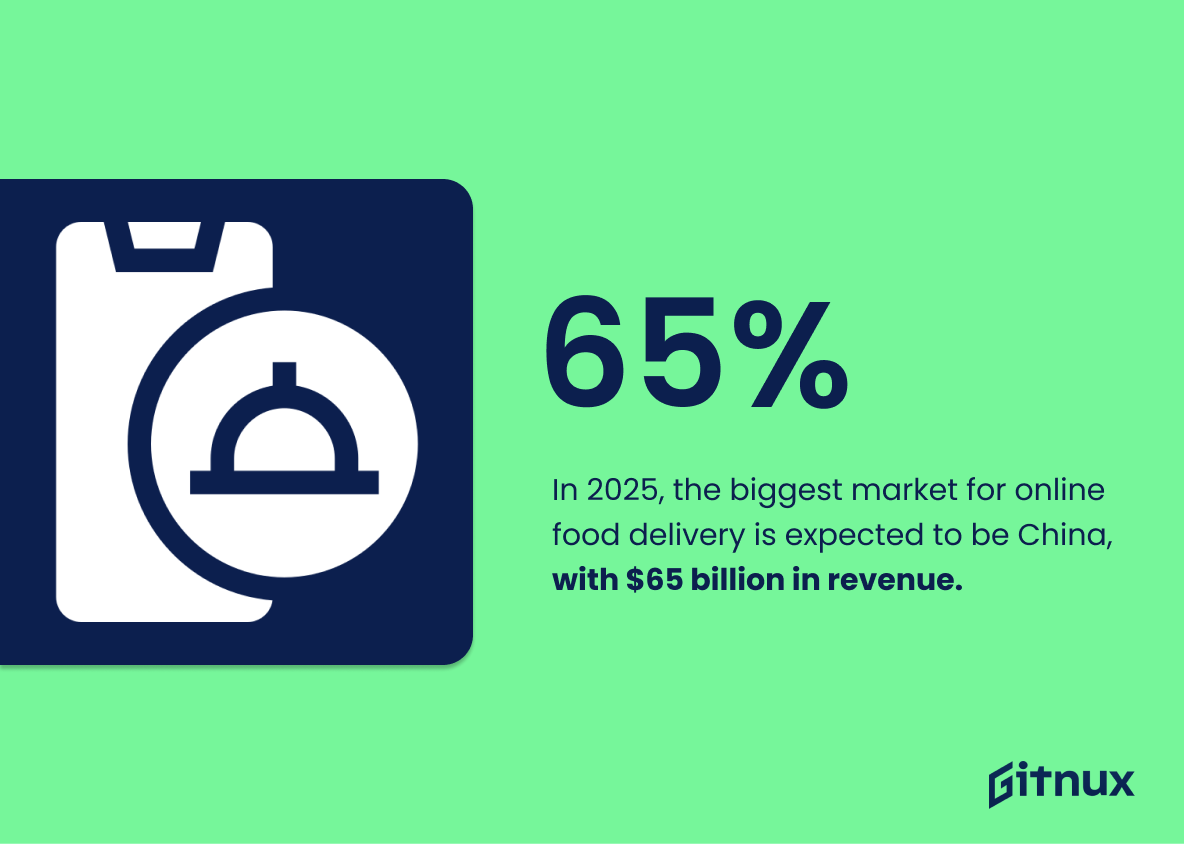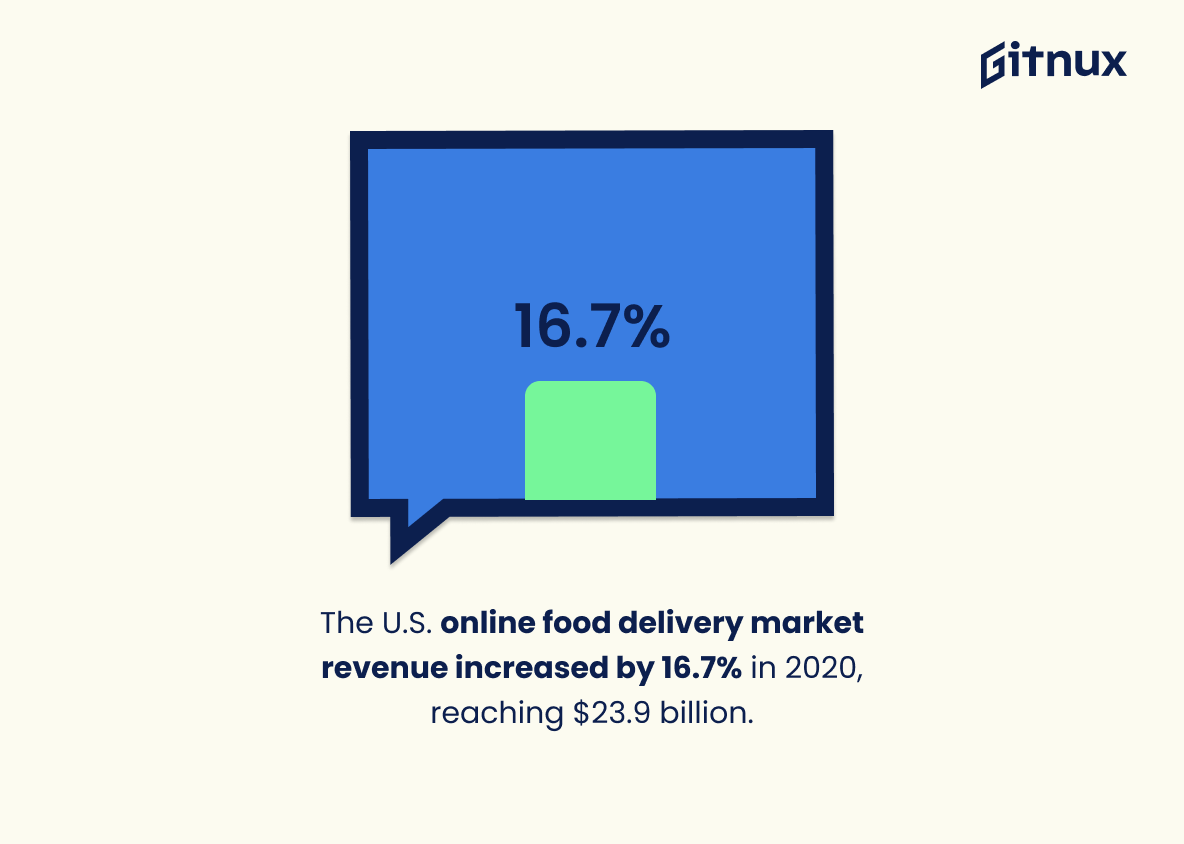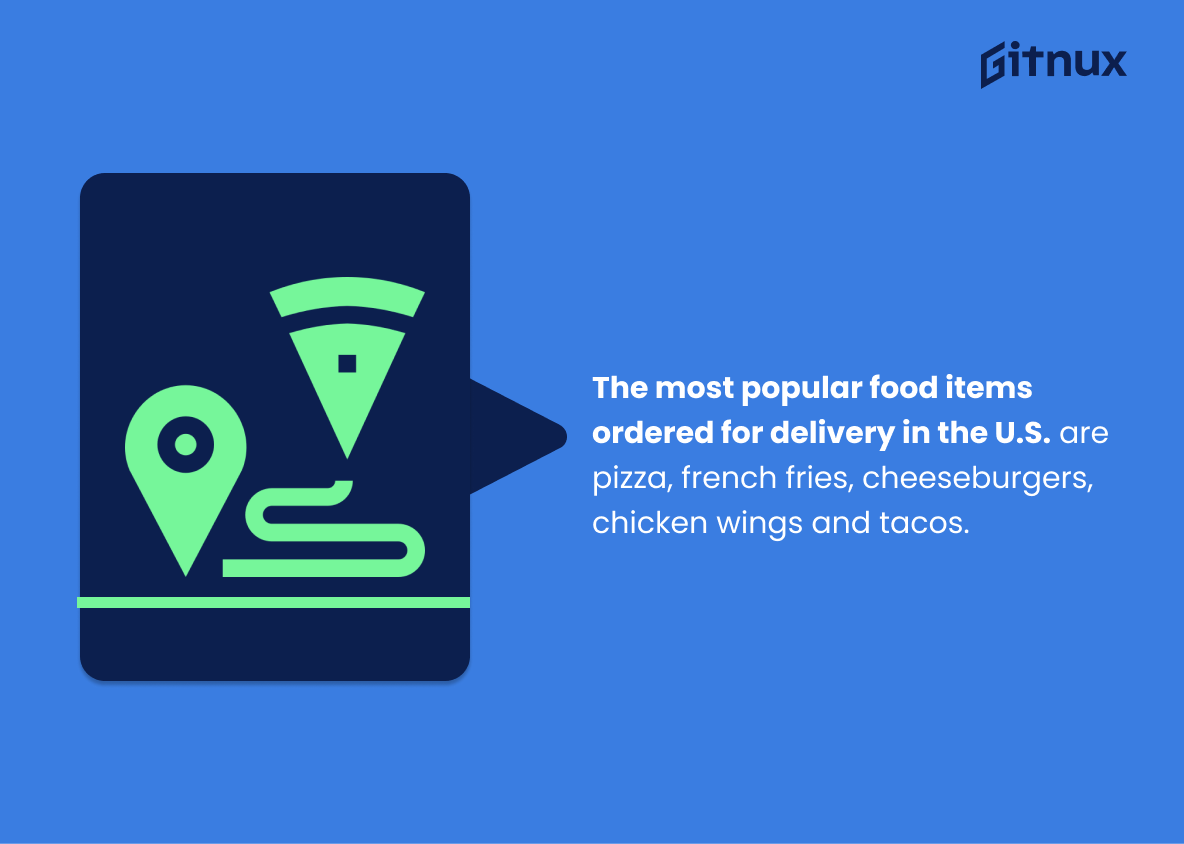As our lives grow increasingly digital and fast-paced, the ubiquity and convenience of food delivery services is perhaps more pertinent than ever before. The food delivery market is expanding at a phenomenal rate, painting a vibrant picture of statistics that illustrates consumer behavior, market trends, and key takeaways for businesses.
This blog post will delve into a treasure trove of fascinating food delivery statistics, serving not only as a potential guide for enterprises within this bustling space but also as an intriguing read for anyone interested in understanding the rapidly evolving dynamics of the food delivery industry. So, buckle up and get ready for a deep dive into the statistical world of doorstep dining, where convenience meets culinary delights.
The Latest Food Delivery Statistics Unveiled
In the third quarter of 2020, the number of Americans using food delivery apps reached approximately 45.6 million.
An engaging and important focal point in our discussion of food delivery statistics is the fact that an impressive number of 45.6 million Americans sought the services of food delivery apps just in the third quarter of 2020 alone. An upward trajectory like this signifies the potential for exponential growth within the food delivery industry and also serves as a testament to the changing consumer habits, with a clear shift towards convenience and digital solutions.
Instrumental in assessing the scope and evolution of the market, this figure provides crucial insights about the escalating reliance on food delivery apps, potentially influencing investment decisions, marketing strategies, and app development for companies venturing into this sector.
In 2020, the food delivery industry’s market size was valued at approximately $15 billion, and it is expected to reach $30 billion by 2025.
Highlighting the astounding valuation of the food delivery industry at approximately $15 billion in 2020 only paints half the picture. The intrigue magnifies when you consider the anticipation of this value doubling to a staggering $30 billion by 2025. This notable surge isn’t merely about the billions staked on the table. It reveals a seismic shift in consumer behavior and lifestyle, an emergence of tech-driven convenience, and a transformed canvas for food enterprises to operate on.
As we delve into food delivery statistics further, this particular data offers a well-defined compass for readers in understanding industry trends, gauging its upward trajectory, and appreciating the potential scope of innovations that this field may soon see.
Millennials were the highest users of food delivery services in 2020, with 77% of them using food delivery apps.
Delving into the heart of our food delivery statistics, an arresting figure shines a light on the behavior and preferences of a pivotal consumer segment. The fact that in 2020, a staggering 77% of Millennials have unfolded the digital interfaces of food delivery apps paints a vivid portrait of changing culinary habits. This insight is not just a number, it’s a testament to how technology is revolutionizing the way we dine, a reflection of our shifting lifestyles and a beacon for advertisers, marketers and app developers to where their focus and strategies should pivot.
Furthermore, it’s a signal to investors on burgeoning market opportunities within the food delivery sector, backed by the buying power and tech-dependent nature of the Millennial demographic. As we plate up future food delivery market analysis, this flavorful piece of data serves as key seasoning, infusing critical context and reference for evolutive patterns in consumer behavior.
63% of consumers agree that it is more convenient to get delivery than dining out with a family.
Unwrapping this intriguing snippet of data reveals a palatable opportunity in the food delivery industry. With nearly two-thirds of the consumer mass leaning towards the comfort and convenience of food delivery, a rich tapestry is offered that hammers home the rising popularity of delivery options compared to traditional dining out experiences.
Notably in a familial context, this nugget of information indicates how industry norms are changing and how it dictates the gastronomic choices of families, often fraught with logistical challenges. This statistic spices up the narrative of our blog on food delivery statistics by showcasing evolving consumer attitudes, hinting at untapped opportunities for businesses to whip up solutions that cater to this increasing demand.
60% of all dining experiences are off-premises, which includes drive-thru, takeaway, and delivery.
This surprising figure – indicating that a significant 60% of dining experiences are currently happening off-premises – serves as a powerful spotlight on the rapidly evolving food industry landscape. As we delve deeper into the world of food delivery statistics, this snapshot reinforces the immense and growing public appetite for drive-thru, takeaway, and delivery services. Recognizing this trend not only informs our understanding of consumers’ shifting dining habits, but it can also trigger thoughtful discussions about future industry developments.
DoorDash has a 50% market share of US consumers who use meal delivery services.
Drumroll, please, for the titan of takeaway – DoorDash – who holds the crown with a resounding 50% market share of US consumers using meal delivery services. Staggering, isn’t it? This figure packs a powerful punch, illustrating the mightiness of DoorDash in the hotly contested meal delivery battleground. On the vast checkerboard of US meal delivery services, DoorDash exists as the reigning king – every second customer using such services is indeed savoring the convenience of this platform.
All hail DoorDash’s extraordinary reach, a critical point in any blog post about food delivery statistics. It underscores how one company can dominate half the dining table of the US meal delivery service users. A palpable testament to their market influence, strategic success, and their powerful resonance with the American consumers, this fact is a flavorful entrée for any discussion on the current meal delivery landscape.
20% of consumers order food delivery at least once per week.
Highlighting that a fifth of consumers opt for food delivery weekly underscores the significant role this sector plays in modern lifestyle trends. It paints a vivid picture of how food delivery services have gone beyond being an occasional luxury to a weekly necessity for many.
This slices a rather substantial piece of the consumer behavior pie chart that blog readers, particularly those in related industries, should digest. In terms of the burgeoning food delivery terrain, this stat triggers an appetite for more insights into how companies can cater to this steady, weekly demand and crank the service up to become a daily dining solution.
Revenue of the Online Food Delivery segment is projected to reach US$42,545m in 2025.
Forecasting a surge to a staggering US$42,545m in revenue for the Online Food Delivery segment by 2025 presents an appetizing picture of the industry’s impressive growth and potential. Serving as a numerical testament in a blog post discussing Food Delivery Statistics, it underscores the thriving progression and transformative power of digital technology in the world of gastronomy. This projection fuels the discussion on key aspects such as consumer behavior, investor confidence, and market dynamics, adding a robust flavor to our comprehension of the ongoing and forthcoming trends in the food delivery sector.
The average spend per online delivery order in the U.S. as of August 2020 was $70.
In a rising culinary cosmos where digital ordering has become increasingly prominent, capturing a slice of data like the “average spend per online delivery order in the U.S. being $70 as of August 2020” offers myriad insights. This monumental figure is a key ingredient for our understanding of customer spending habits in food delivery, highlighting the significant monetary contribution each order brings to the industry.
Moreover, from a blog writer’s perspective, this number provides valuable spicy context, amplifying the importance of online platforms in the food marketplace. The $70 average is, essentially, the magnificent entree story served to readers, stirring immense interest as they delve into the intricacies of food delivery statistics.
In 2022, the U.S. online mobile food delivery users were expected to surpass 121.61 million users.
Unraveling the significance of the data that suggests U.S. online mobile food delivery users were expected to surge beyond 121.61 million in 2022, it delineates several intriguing aspects of the food delivery industry. First off, it confirms the surging popularity and acceptance of mobile-based food ordering, likely a manifestation of the increasing reliance on technology for everyday conveniences. It sets the stage for businesses to think mobile-first when strategifying for the food delivery market.
Furthermore, such a drastic increase in users flag high-profit potential inherent in the food delivery realm, enticing more innovators and venture capitalists to take a leap into this fast-growing sector. Also, this shift in consumption pattern is an encouraging sign for restaurants, urging them to digitize their business and align their strategies with the burgeoning online world.
Lastly, this upward trend potentially signals larger societal shifts including busier lifestyles, increasing disposable income, and changing consumer behavior favoring comfort and convenience. All these aspects combined, give this statistic a central role in shaping the narrative of food delivery progression and its future outlook, making it an integral projection in a blog post about food delivery statistics.
In 2025, the biggest market for online food delivery is expected to be China, with $65 billion in revenue.
Delving into future trends, one may be intrigued to discover that predictions for 2025 place China as the dominant force in the online food delivery market, raking in an estimated $65 billion in revenue. These figures are a testament to the burgeoning influence of technology on food consumption patterns and the continued growth of online services in an increasingly digital world.
From the perspective of a blog post on Food Delivery Statistics, the potential magnitude of China’s market provides readers not only with a glimpse into expected geographical industry shifts, but also serves to amplify the global scale of online food delivery services. It underscores the elements of cultural, economic, and technological nuances that come into play, thereby enriching the discourse on the world of food delivery services.
The U.S. online food delivery market revenue increased by 16.7% in 2020, reaching $23.9 billion.
The seismic shift in the U.S online food delivery market, particularly the impressive 16.7% spike in revenue to $23.9 billion in 2020, furnishes us with crucial insights for our examination on Food Delivery Statistics. This upward trajectory not only underscores consumers’ growing reliance on digital food services amid constricting circadian rhythms and a pandemic-constrained environment, but also teases promising prospects for businesses eyeing to plunge or expand in this dynamic domain. Inherent in this statistic is the hint of emerging technological advances, shifting consumer tastes, and rising market competition that are reshaping the landscape of food delivery services.
In 2023, the number of users in the online food delivery segment is expected to amount to 1821.5 million.
Highlighting that, by 2023, the online food delivery user base is projected to reach a staggering 1821.5 million is like unveiling a roadmap to an oasis for businesses looking to venture into or expand within the food delivery industry.
This projection suggests two key insights. First, the market retains a massive potential for growth and expansion, an encouraging sign for both existing players and newcomers. Secondly, it underscores the changing consumer behavior and preferences towards convenience and digitalization. A blog about Food Delivery Statistics would undoubtedly find this piece of information crucial as it speaks volumes about the future trajectory of the market; painting a picture of a burgeoning and exciting frontier ahead.
The most popular food items ordered for delivery in the U.S. are pizza, french fries, cheeseburgers, chicken wings and tacos.
Gleaning insights from this statistic can significantly fuel the culinary universe of the food delivery industry. Not only does it paint a clear picture of America’s fast-food preferences, but it anchors the identities of people’s most beloved comfort foods—pizza, french fries, cheeseburgers, chicken wings and tacos.
For entrepreneurs, restaurants, and food delivery services, understanding these trends paves the way for tailoring menus, strategizing marketing efforts, and optimizing customer satisfaction. Moreover, it uncovers a broader narrative—the intertwining of food and culture, thus adding a flavor-rich depth to the discussion in a blog post about food delivery statistics.
Conclusion
To encapsulate, the surge in the food delivery industry is not just a fleeting trend, but a seismic shift in consumer behavior. The ballooning statistics underscore a significant transition in how people access their meals, driven by technological advances, changing lifestyle patterns, and the unprecedented influence of the Covid-19 pandemic.
Companies that keenly understand these aspects and adapt to the evolving needs and preferences can tap into this growing market and achieve substantial success. As statistics continue to develop, one thing is certain: the future of food is, without a doubt, digital and at the doorstep.
References
0. – https://www.learn.g2.com
1. – https://www.secondmeasure.com
2. – https://www.www.qsrmagazine.com
3. – https://www.www.statista.com
4. – https://www.blog.slicelife.com
5. – https://www.gotechark.com
